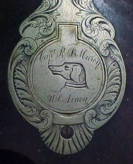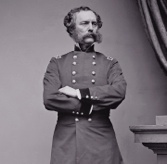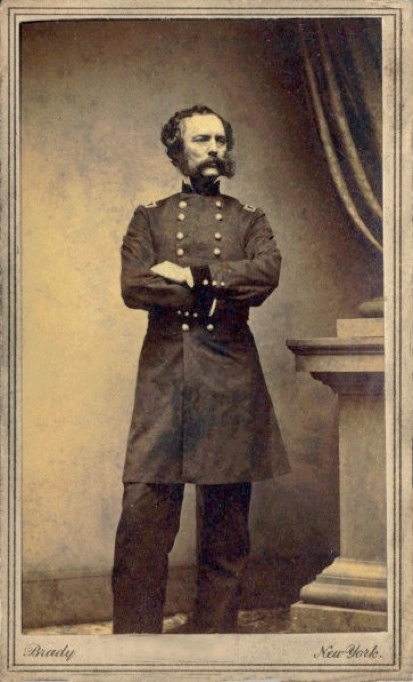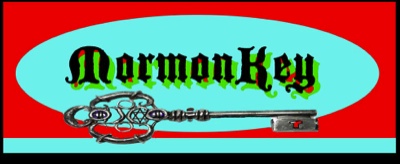

"MORMONKEY: The Key to News and History of the Mormon Faith"
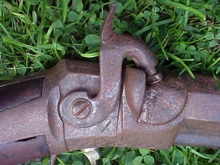
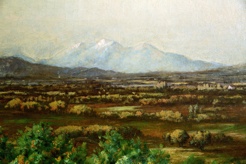
The Mormon -
Marcy Rifle Standoff

(Courtesy: Private Collection)
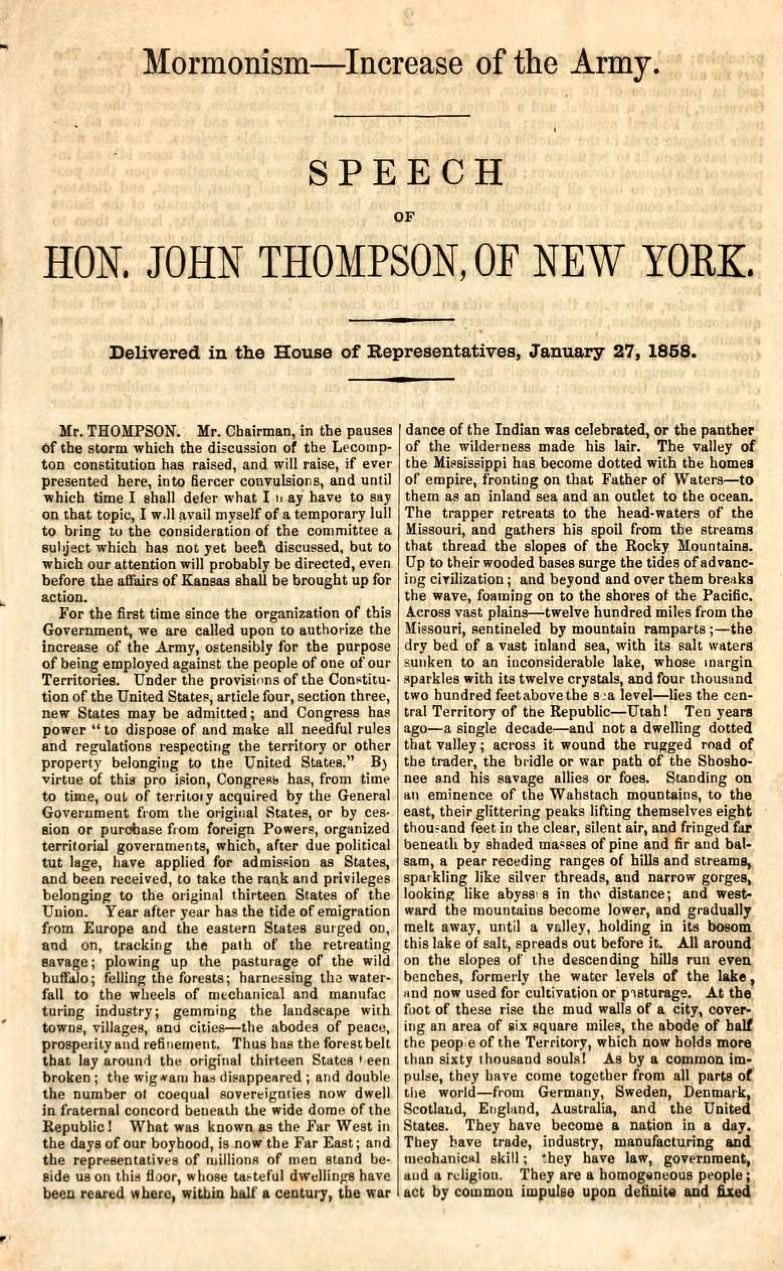
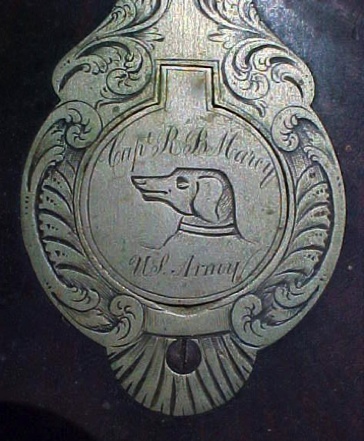
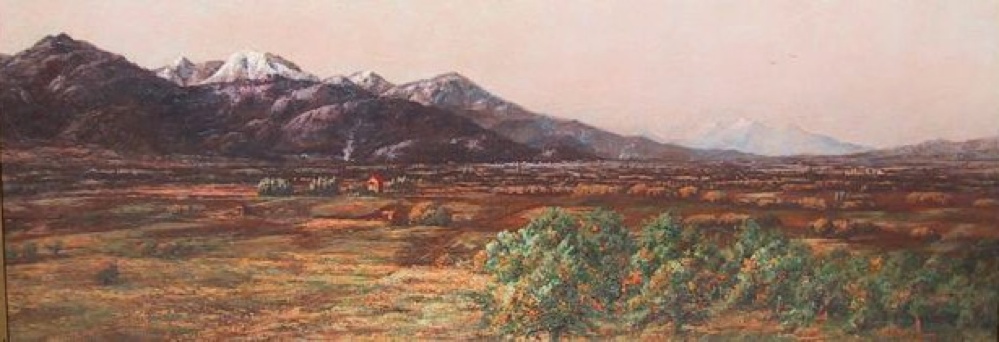
(Courtesy: Private Collections)
The year 1857 was a very confounding one for Mormons who had come to Utah to settle. In one breath it seemed it was a rather auspicious year that marked the first decade since settlement began in the Utah Territory. Led by Brigham Young, just as the first Mormon pioneers set foot on the grandiose Salt Lake Valley floor on the 24th of July the Mormon leader hosted a prayer in that summer of 1847 and proclaimed a wish that if he and his fellow Mormons could have a mere 10 years of peace, doing so while having 'no odds with the devil or Uncle Sam, it would be a great blessing.'
Since the founding of the Church of Jesus Christ of Latter-day Saints in 1830, the infant religion that seemed based on one revelation after the other found itself facing continuous degradation and turmoil wherever their people sought to hang their hat. With a period of 17 years now behind them since their founding in 1830, the Mormon consortium of the Latter-day Saints movement, all consolidated their group effort in a most noble and earnest manner, seeking to settle in a very remote and isolated part of the United States where there could be hope for peace, or so they hoped.
Several of those that sought refuge now in the Rocky Mountain wilderness, just east of Colorado Territory, were hoping that they would not ever again witness being driven from their homes. In the past, many members of the Mormon faith had variously settled in Nauvoo, parts of Missouri and in Kirkland, Ohio, all after having come from the central regions of New York State. Wherever the Mormons went, it seemed trouble would always brew.
But God and the Lord Jesus apparently had one more test for their people, for on on July 24, 1857, precisely ten years to the exact day – Mormon leader Brigham Young received notice that the United States Army was heading in a concerted lock-step beeline straight to Utah Territory. The troop contingency was armed to the teeth under the command of Captain Randolph B. Marcy of the 5th Brigade with given orders handed down by Colonel Albert Sidney Johnson.
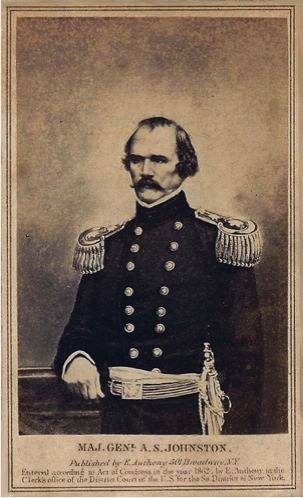
United States President James Buchanan thought he should do something about the rise of the Mormons and their polygamous ways. A ploy of sorts it may have been when at first he officially appointed Brigham Young the territorial Governor of Utah Territory, and with that a bench full of newly seated federal judges, to assert a more solid basis of legal Federal jurisdiction.
This all set the stage to legally justify the sending of the some 2,500 U.S. Army troops strong to occupy the Utah territorial region so as to keep tabs on the seemingly rascal Mormons that threatened the virtuous cultural standards of the America’s east.
U.S. Army Colonel Albert Sydney Johnson, prior to his appointment as a Maj. General in the then soon approaching American Civil War just a few scant years ahead - carried a great weight on his shoulders. This burden was because the situation Col. Johnson was commandering could take a turn for the worst at any given moment and erupt into a great uncontrollable exploding powder keg.
Simply put, here was a growing group of red blooded American citizens that sought to practice their religion peaceably in a country principly founded prmarily on religious freedom, but the ruling constituency over these said people held to the basic tenet that some of the elements found within the Mormon practice, were abhorrent to generally accepted cultural mores of the times that were based on a more puritanical cultural foundation.
For matters of this discussion, the main crux of this issue seemed to be based on the proclaimed Mormon act of polygamy; of having more than one legal wive on register and under the legal jurisdiction of the state (or "territory") all within the construct of the United States.
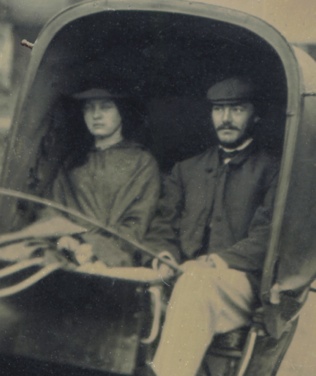
There seemed that there was not to be any argument over this issue. The practice was considered to be illegal, although it would not have been codifed as such and recognized by the LDS Church and the United States courts federally until about 30 years into the future, in 1890.
The Bible's King Solomon had 700 wives and 300 concubines. The wives were described as foreign princesses. This included the Pharaoh's daughter and women of Moab, Ammon, Sidon and of the Hittites. Referring to the Pharoah's daughter, incest apparently was part of King Solomon's regimen.
POLYGAMY BECOMES A HEATED ISSUE
Mormon Aaron Johnson has been criticized by modern historians in this current Twenty-first century for taking his brother's several daughters all as his plural wives, and marrying them when they were in their younger teen years. Over his lifetime Aaron Johnson had kept 12 wives and had sired 111 children.
On March 1, 1857, just months preceding the U.S. government's Utah territorial invasion under the auspice of Capt. Randolph B. Marcy, Aaron Johnson defied a revelation of Prophet Joseph Smith by marrying 14-year-old Julia Johnson, his niece and brother's young daughter. Aaron Johnson was fifty years of age, and already having married eight other wives, was old enough to be the girl's grandfather. Also on the same day of 1 March 1857 Aaron Johnson was also married and sealed to Cecelia Sanford, age 15 and Sarah James, age 19. All of this however was not actually in keeping with Mormon doctrine defined by Prophet Joseph Smith in his last days. The reality was that Julia was the fifth of Aaron’s already four wives who were all sisters to each other, and all daughters of his brother. All of this was a direct antithesis to revelation delivered by Joseph Smith.
Although seemingly based on hearsay evidence this is better clarified in William Clayton's Journal; A Daily Record of the Journey of the Original Company of "Mormon" Pioneers from Nauvoo, Illinois, to the Valley of the Great Salt Lake (Salt Lake City, Utah, published under the auspice of the Clayton Family Association, 1921. Here Clayton provides recollections drawn from his original journal writings where he discusses an exchange between Mormon William Clayton and Prophet Joseph Smith. The discussion between the two regarded William Clayton's intentions of marrying 17 year old Lydia Moon, who Joseph Smith wanted to marry for himself, but knowing that WIlliam Clayton was already married to young Lydia Moon's other two sisters. William Clayton recalled:
"He [Prophet Joseph Smith] said the Lord had revealed to him that a man could only take 2 of a family except by express revelation and as I had said I intended to take Lydia he made this known for my benefit. to [sic] have more than two in a family was apt to cause wrangles and trouble. He finally asked if I would not give L to him I said I would so far as I had any thing to do in it. He [Prophet Joseph Smith] requested me to talk to her."
So here is where Aaron Johnson appears to have crossed the line for most observers coming to examining this issue with a Twenty-first century focus. But what is also ironic about all of this, is that today's medical science has more solidly learned that incest can increase the fomentation of mental retardation in offspring by increasing the chance of rare recessive traits appearing in successive offspring.
However in the mid-nineteenth century, this widely proven and acceptable fact was not readily known. Even if taken from a today's persepctive standpoint, placing much credence on the issue of Aaron Johnson and his marrying his brother's daughters; the discussion would best remain mute. This would be even if such acts violated the so-proclaimed tenets of revelation ascribed to by Prophet Joseph Smith in claiming the marrying of over two sisters was not sanctified unless by further revelation.
Despite what many perceive as utterly reproachable; that Aaron Johnson had exhibited such excessive behavior throughout his personal life - his public life speaks volumes for the work he tirelessly expended for his fellow man and fellow Mormon. Aside from being the head of the original "Nauvoo Legion" / Mormon militia back in Illinois and aside from his accompaniment of Prophet Joseph and Hyrum Smith as their escorts to the Carthage, Illinois jailhouse where they eventually met their deaths, Aaron Johnson's stalwart bravery extended to his dedicated 1850 effort in leading a wagon train of 135 loaded with Mormon men, women and children to the promised land of Utah Territory where he even met the loss of his first plural wife and a son to cholera, on that historic journey.
Still suffering from such an ordeal Aaron Johnson took on further responsibility and founded Springville, Utah - comandeering construction of a fort there in the first two years to serve as protection from the American Indian threat. He then became the area's first bishop. Aaron Johnson also became Springville's first postmaster as well as elected mayor. Eventually Johnson's noble public service effort also extended to that of becoming a Utah County judge.
US GOVERNMENT READIES ATTACK ON MORMONISM
It was all of this that Aaron Johnson was actively engaged in when the threat of U.S. government intrusion by the U.S. Army's Col. Randolph B. Marcy came 'knocking on Aaron Johnson's door' and that of fellow Mormons'.
Placing a hat now on his head as Adjutant Brigadier Gen'l of the Mormon militia, Johnson now assertively took the reigns of heading the militia in most sectors of Utah Territory in anticipation of the incoming 1857-1858 potentially aggressive hostile action of the U.S. military in its official capacity against what the government cited to be that known as "Mormonism."
Aaron Johnson was set to go head to head with U.S. Col. Randolph B. Marcy - ironically all this was primarily raised up over the Mormon practice of polygamy - for which Johnson, all kidding aside, himself was one of its main proponents!
Polygamy is a common marriage pattern in many parts of the world today - legal in nearly 50 out of 200 sovereign states, the vast majority of them being Muslim majority countries. In North America polygamy has not been a culturally normative or legally recognized institution since the continent's colonization by Europeans.
Polygamy thus became a significant social and political issue in the United States in 1852, when The Church of Jesus Christ of Latter-day Saints (LDS Church) proclaimed that a form of the practice, indentified as plural marriage, was part of its doctrine.
Opposition to the practice by the United States government resulted in an intense legal conflict, beginning with the actions of the U.S. Congress in 1857-1858, which mandated the U.S. government's intervention represented by the authoritative actions within the Utah Territory at the time under the U.S. Col. Albert Sydney Johnson command
Mormon practice of plural marriage was officially introduced by Joseph Smith, the founder of the Latter Day Saint movement, on July 12, 1843. As polygamy was illegal in the state of Illinois, it nonetheless was practiced privately and was secretly in practice as far back as 1839 in Nauvoo proper before it was officially mandated by Smith in 1843.
Several Mormon leaders, including Smith, Brigham Young and Heber C. Kimball, took plural wives. Mormon leader and Springville, Utah founder Aaron Johnson as well took plural wives and can be seen within these pages illustrated by the recently discovered 1855 quarter-plate Ambrotype depicting Aaron Johnson and his third plural wife Jane Scott sitting in a horse drawn carriage on the dirt streets of Springville, in Utah's pioneer days.
After the 1844 death of Joseph Smith, Brigham Young had carried the practice of polygamy by the Church of Jesus Christ of Latter-Day Saints to the Inter-mountain West; to the areas of Utah were the principle of plural marriage was openly practiced.
It was in 1852, that Brigham Young felt the Utah based church was secure enough to now formally announce the practice of polygamy to the world.
However opposition from the U.S. government began to foment; thus threatening the legal standing of the church. It would be the official announcement by Mormon President Wilford Woodruff a third of a century later, on 25 September 1890 that would codify the church's official abandonment of polygamy and its practice. The church would formally accept Woodruff's decree at a general conference in Utah on 6 October 1890.
Notwithstanding however, breakaway Mormon fundamentalist groups living mostly in the western United States, Canada, and Mexico still practice plural marriage - even currently in today's twenty-first century.
Never-the-less, the root genesis of the issue leading to the aforementioned points of discussion and subsequent actions that transpired henceforth here in the United States, lies essentially with the progression of authoritative procedural measures carried out beginning and played-out in 1857 - 1858, as discussed hereof and continued in following.
Thus, to bolster up and to legitimize the whole military operation that was heading towards the Salt Lake Valley region in 1857, instructions set by U.S. Army General-in-Chief Winfield Scott to General William S. Harney on 29 June 1857, became mandated that the troops under Harney’s command were to be a "posse comitatus," and that ‘in no case will you, your officers or men, attack any body of citizens whatever, except on such requisition or summons, or in sheer self-defense.’
President James Buchanan’s administration, however, whether being a deliberate act or one with no intention, was wholly discourteous by failing to make an effort to notify Utah Territorial Governor Brigham Young of its intentions. as the government's military forces headed to Utah Territory. The Territory’s leaders however became informed of the approaching U.S. Army from mail carriers, as luck would have it.
Telegraph communications brought in with the railroad lines was still a decade away. The mail carriers had learned word of the impending dire situation during their handling of notices generated back in Independence, Mo. that the U.S. postal carriers handled citing the big government supply contracts for the government's impending plan in Utah Territory. News of the contracts spread by word of mouth, which is how the mail carriers got wind of it. It was on the tips of many tongues. This was just two years before the Pony Express was organized out of St. Joseph, Missouri, so posted mail and the dissemination of information was very slow during this time just before the Civil War.
Given the great lax in information melded with a black holed veil of subterfuge and confusion, compounded by the legacy of 27 years of persecution, the Mormons gravely held nothing more than the worst of expectations. As it was, just 13 years prior, their first prophet Joseph Smith, was killed in a gun shootout by a inflamed mob that included Mormons themselves, some reportedly in disguised painted ’black face,’ at the jailhouse in Carthage, IIinois in 1844.
THE CASE OF MORMON PRATT
Additionally, only two months into the spring of this year 1857 had hardly passed before the Mormon Utahans had learned of Mormon devotee Parley P. Pratt’s murder back in Arkansas. Pratt was one of the Mormon’s "Twelve Apostles" and a very devoted disciple who travelled the United States as a Mormon missionary. Pratt was a practicing polygamist with several plural wives.
One woman named Eleanor McLean, who eventually became Pratt's twelfth wife, left her alcoholic wife beating husband Hector McLean for Pratt after she had met Pratt while he headed a church mission in San Francisco. Eleanor joined the church and her son sought out and became baptised.
Hector Mclean went after her and his children they had together, as he found the whole idea of Mormonisn revolting. The issue went to the courts because the McClean's had never become legally divorced before Eleanor McClean was sealed to Pratt. The laws however were not as they are today, and it was hard to prosecute Pratt. Nevertheless Pratt was finally arrested in May of 1857 at Indian Territory (now Oklahoma) and removed to Arkansas for trial. Pratt and Eleanor McLean were charged with theft of the clothing of McLean's children. Under Arkansas law a parent could not be charged with kidnapping their child; the latter which was Hector McClean's position he offered before the court.
Judge John B. Ogden presided in favor of Pratt and Eleanor McClean, as he was sympathtic to the woman's trials and tribulations over her wife beating ex-husband Hector. Parley Pratt was secretly released from jail, but a still crazed Hector followed Pratt, assisted by two friendsand Pratt was shot and gruesomely stabbed by Hector on a farm there northeast of Van Buren, Arkansas, dying two and half hours later from extensive blood loss.
Mormons hearing of Pratt's death often compared it as an act of martyrdom. Pratt's dying words were said to be, "I am dying a martyr to the faith."
News of Pratt's death circulated amongst the Mormon community. Brigham Young compared Parley Pratt's death to the deaths of Joseph and Hyrum Smith; both considered martyrs for what they believed in.
In 2007, over a century and half later the Deseret Morning News cited that "Pratt was killed near Van Buren, Ark., in May 1857, by a small Arkansas band antagonistic toward his teachings."
This mix of mob violence, death and impending potentially hostile U.S. government action that seemed to be both ongoing and in the past, was always in the back of every rationally thinking Mormon's mind.
At this time of the U.S. government by Col. Marcy's and his 2,500 troops, Mormon Sanford Porter Sr. aptly exuded the general sentiment of his fellow brethren, writing, ‘[We are] weak in number, and weak in means, but with too much American blood in our veins to put ourselves up as a target for an army to shoot at without making any effort to protect ourselves.’
With this the Mormon ‘Nauvoo Legion’ militia began to organize. Adjutant Brigadier General Aaron Johnson of Springville, Utah Territory, now had a big job before him in helping arrange for his troops to prepare for the worst.
U.S. Army Captain Marcy’s large troop contingent had no idea what they were facing, as did the Mormons themselves. Resourceful as the Mormon’s had learned to become with all of the strife and tribulations of their recent past, even their women instinctively grasped the ‘horse by the tail’ and diligently sat up late nights sewing garments and knitting blankets for the Mormon militiamen, with these soldier’s wives also rolling up their sleeves like World War II’s "Rosie the riveter,” pouring dripping hot lead into molds to make bullets for the Mormon troops.
The first day August 1857, the militia mustered and conducted training maneuvers through-out the Utah Territory. Concentrated efforts to round-up all guns and ammunition that could be had, including the prized Colt revolvers, was mounted. Staples of assorted foodstuffs and grains were rounded-up and securely stored. Solicitations of Mormon homestead settlers in distant parts of California were made and even Mormon missionaries over in England and Europe were asked to come back to the States and the Utah Territory and be ready for action of preserving the new Mormon homeland.
As well, the region’s native American Indian contingent was gathered into Councils, where the Mormons hoping that these prairie tribes could understand the veracity of the circumstances of what was coming and that it would be best for all not to provoke situations that could mushroom in to something that could get very much out of control, dangerous and met with death.
All while this turbulence of official action began too swell, a small wagon train contingency of an civilian Mormon emigrant people fleeing Arkansas on the heels of the Parley Pratt murder, began heading towards the Utah Territory. As the wagons entered the region, members of the Mormon militia looking for signs of Capt. Randolph B. Marcy’s troops witnessed the emigrants coming into the fold. Confusion entered into a bed of ever increasing tension brought on by the U.S. governmnent U.S. Army troop occupation.
The Indians also observed the strange emigrant movement into their homeland and all of these circumstances added to further confusion. The emigrants were made an offer by the Nauvoo Legion militia who had approached them. It was proffered that it would be best for the emigrants to leave all of their possessions to the Indians, in an apparent effort to appease the Indians and to diffuse them from igniting some uncontrollable situation.
The Mormon militia planned on safely escorting the Arkansas troupe to Cedar City, some 250 miles south of Salt Lake City.
As the excursion began there were said to be seventeen children too small to walk, some with mothers that had been placed in the wagons along with some people who had somehow become wounded. Women and older children followed on foot as well, with the able bodied men that came with them from Arkansas - and all followed the wagons. The group proceeded in confidence as the armed Mormon militia contingent served as protection.
THE MOUNTAINS MEADOWS MASSACRE
Not long into the trek, on 11 September 1857, the grouping haphazardly became separated between random trees and brush that thickened as they proceeded over a slope and with this rise in the ground, suddenly a strange deadly massacre wildly mushroomed.
Whatever the reasoning was history shall never really come to know, but Indians and militiamen alike together murdered all but the some seventeen small fragile little children. They were taken to nearby Mormon settlement homes for refuge and protection. Were militia orders and counterorders misinterpreted? Were the actions unintentional as deliberate? History may never come to know.
What is known is that just months previous, when word of the armed government intrusion was swirling from one Mormon tongue to the other, is that it was not uncommon to hear Mormons proclaiming and threatening that they would burn down their own homes to the ground before letting the U.S. federal government have their way!
The relatively peaceful Utah War that had ensued from 1857 to 1858, thus became scorned with this notable instance of violence that became widely known as the Mountain Meadows Massacre, when leaders of a local Mormon militia ordered the killing of a Mormon civilian emigrant party that was traveling through Utah during the escalating tensions.
Ironically, precisely 144 years to the very day, the New York City World Trade Center's Twin Towers would fall during an attack claiming thousands of dead and injured, an event that many consider to be similarly as shocking as the 1857 Mountain Meadows Massacre - with both likewise intertwined inside politically driven government cover-ups of events that differ from what was reported publicly by the press.
The bodies of the Mountain Meadows Massacre's dead were dragged and hurriedly thrown into ravines and low spots dotting the terrain in the remote Utah Territory. Stray brush was quickly cut and gathered to cover the dead remains, which quickly became feasted upon by wild animals and washed away by the subsequent rains and storm squalls that intermittently ravaged the area.
Word by messenger was sent to Salt Lake City to bring the news of the tragedy to Governor Brigham Young, a 500 mile round trip that took 6 days! Young ordered that the small children, what was left of the living - be protected from molestation and let the wagons carrying them pass peaceably. Although no finite count had or could ever have been made considering the harried circumstances, it has been estimated that from between 100 to 150 people were murdered during what has become known as the Mountain Meadows Massacre. The whole sordid event placed the integrity of a good many of the Mormon militia in an indifferent bad light.
To many non-Mormons, the name 'Mormon,' cast further disillusionment in one's mind.
Early into the following year, with the Mountains Meadows Massacre still ringing everywhere, in 1858, Brigham Young agreed to step down from his position as governor and was replaced by a non-Mormon named Alfred Cumming. Nevertheless, the LDS Church still wielded significant political power in the Utah Territory. The vacating of the Mormon governorship by Brigham Young however prompted some to believe for sometime that Young was actually the one who had ordered the heinous attack on the wagon train of settlers from Arkansas - but this has never been fully substanciated as fact.
It too has been said that some of the top echelon of Mormon leaders effectively set-out orchestrating a scheme to cover-up the deviant deeds of a few Mormons and placed full blame on the scavenging Indians for the entire warped episode. This ungodly position was maintained within the Mormon hierarchy for several years until the event was whitewashed with some legal action and the blame put on one Mormon man present who was involved in the sinful incident and said to have incited it. Hence, to some this man was considered to be a scapegoat in acting as concealment to protecting others.
A PRACTICE OF "BLOOD ATTONEMENT"?
Before moving to Utah from Nauvoo, the Mormons began to practice the act of 'blood atonement," or the spilling of blood as a form of sacrifice.
As a great 'spilling of blood' took place during the 1857 Mountain Meadows Massacre, it can never be ruled out that the event may have occured as a act of blood atonement.
This act of blood atonement was one of the precepts that horrified and repelled the remnant of original Mormons that would later become the Reorganized Church of Jesus Christ of Latter-day Saints. This faction of the Mormon church would come to seat itself in Independence, Missouri just following the end of the Civil War and practice in the same state where the primary original LDS co-founders John Whitmer and brother David Whitmer resided till their deaths - decades after their excommunication from the LDS church.
Popular opinion at the time that this evil scourge first took place maintained that the U.S. government and Captain Marcy were the underlying factions behind this sordid event.
Accordingly though, the truth of the matter was that Capt. Randolph B. Marcy’s rifle was never raised to fire upon the Mormons at Mountain Meadows, Utah - nor were his troops ever involved in the Mountain Meadows Massacre.
But the irony of the confluence of negative energies brought on by the United States federal government that grew in a heightened urgency arising over the sudden fear that had been thrust upon every one of the Mormon people. It was the swirling fear that whipped-up and culminated into this ardent turmoil-soiled event that can be said marks this saga in American history as one of but many storied government indiscretions that caused death, directly or indirectly of innocent Americans. In many ways, this remains the symbolic talking point of the final turbulence that beset the Mormon people in their early days of strife in the practice and name of one's religion.
It is this very symbol of intolerance that is marked and imbued by this surviving recently discovered rifle of U.S Army Capt. Randolph B. Marcy of the United States of America that is presented and revealed here for the first time since it was carried into the Utah Territory over a century and one half ago and shall remain as a standing symbol of authoritative oppression over the principles held by Mormons and their steadfast everlasting stance to uphold those principles close to one's heart.
***************************

It was at a time when native American Indians too faced their own massacres at the hands of the U.S. Army and had their scalps taken as souvenirs by the federal agents of the United States government; a true fact often written out of the official historical narrative passed down since the prairie days of the Nineteenth-century American epoch.
(Courtesy: Private Collection)
